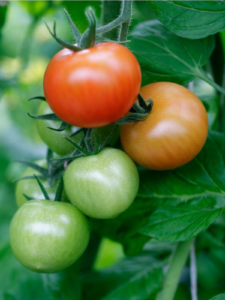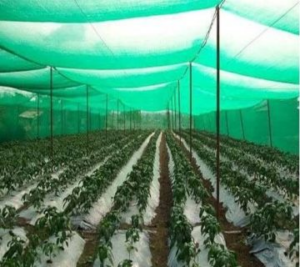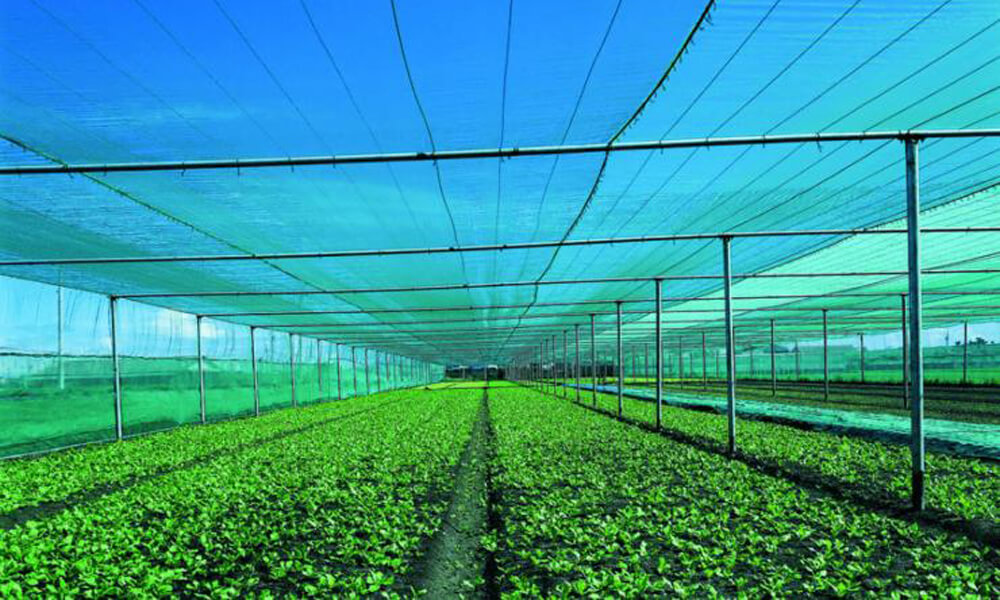Tomato farming in South Africa thrives on innovation and adaptation, where the careful selection of shade nets and substrates can significantly impact yields, costs, and sustainability. As we traverse the diverse landscapes of our nine provinces, let’s uncover the practicalities and benefits of shade net farming while delving into the nuances of substrate selection to maximize success.
Shade Net Farming: A Shield Against the Elements

Shade net farming serves as a protective barrier, shielding tomatoes from the harsh elements while optimizing growth conditions. Each province presents unique climatic challenges, and choosing the appropriate shade net density is paramount:
- Eastern Cape: Moderate climates benefit from 40%-50% shade netting, offering protection against excessive heat and wind while maintaining ample sunlight for optimal growth.
- Western Cape: Coastal regions thrive with 20%-30% shade netting, balancing sunlight exposure and protecting against coastal winds.
- Free State: Arid climates demand 60% shade netting to prevent sunburn and temperature extremes, ensuring consistent growth throughout the year.
- Mpumalanga: Subtropical conditions call for 70%-90% shade netting, providing essential shade and moisture retention for robust tomato development.
- Gauteng: Urbanized environments benefit from 50%-60% shade netting, striking a balance between light penetration and heat reduction.
Selecting the Right Cultivars for Optimal Performance
Matching tomato cultivars to local conditions is crucial for maximizing yield and quality. Each province has cultivars best suited to its climate and growing environment:

- Eastern Cape: Varieties like ‘Big Beef’ and ‘Early Girl’ thrive in mild temperatures and moderate sunlight, offering high yields and disease resistance.
- Western Cape: ‘Roma’ and ‘Cherry Bomb’ excel in coastal climates, with ‘Sungold’ cherry tomatoes proving popular for their sweetness and adaptability.
- Free State: Heat-tolerant cultivars like ‘Heatwave’ and ‘Solar Fire’ perform well in hot summers, producing consistent yields despite temperature fluctuations.
- Mpumalanga: ‘Celebrity’ and ‘Sweet 100’ cherry tomatoes flourish in humid conditions, while ‘Better Boy’ offers disease resistance and high productivity.
- Gauteng: ‘Bonny Best’ and ‘Early Girl’ are reliable choices for urban environments, with ‘Park’s Whopper’ providing exceptional flavor and yield potential.
Optimizing Spacing and IPM Practices
Proper spacing and integrated pest management (IPM) practices are essential for maintaining plant health and minimizing crop loss:
- Spacing: Depending on cultivar and shade net density, spacing tomatoes 45-60cm apart within rows and 75-90cm between rows ensures adequate airflow and sunlight penetration for optimal growth.
- IPM: Implementing IPM strategies such as crop rotation, biological controls, and monitoring for pests and diseases helps minimize the need for chemical interventions, reducing costs and environmental impact.
Heating and Cooling Considerations
Temperature regulation is critical for tomato growth, especially in regions prone to temperature extremes:
- Heating: In colder climates, supplemental heating methods such as greenhouse heaters or soil heating cables can maintain optimal temperatures for seed germination and early growth stages.
- Cooling: Shade nets provide natural cooling by reducing sunlight intensity and air temperature. Additional cooling methods like evaporative cooling systems or shade cloth can further mitigate heat stress during hot weather.

Cost Analysis and Sustainability
While initial investment costs may vary depending on factors like shade net density and infrastructure, the long-term benefits of shade net farming—including higher yields, reduced water usage, and improved pest management—far outweigh the upfront expenses. By adopting sustainable practices and optimizing resource utilization, farmers can achieve cost-effective and environmentally friendly tomato production.
Conclusion: Cultivating Tomato Farming Success Through Innovation
As we navigate the intricacies of tomato farming in South Africa, it becomes clear that success hinges on strategic decision-making and adaptation to local conditions. By harnessing the protective benefits of shade nets, selecting the right cultivars, optimizing spacing and IPM practices, and implementing efficient heating and cooling solutions, farmers can unlock the full potential of tomato cultivation while ensuring economic viability and environmental sustainability.

